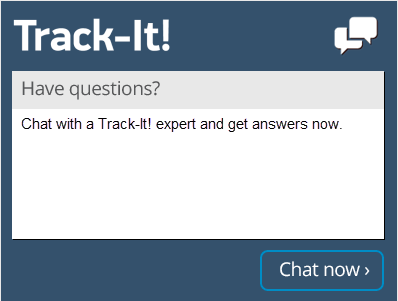For most sizable or growing firms, working towards better software license management is a necessity. Working towards the goal of following software & license management best practices allows teams to identify a complete software inventory to be both better informed and operate within legal guidelines. This article will cover some best practices and how to track and manage software licenses.
While better software license management is certainly an achievable goal, many firms are left wondering where to start or which software license management process will yield the best results. We will review the best practices for managing software licenses in this article. These guidelines will give managers a starting point in the software asset management process, as well as outline which methods are most efficient.
Monitoring usage, installation, and software configurations can allow central IT to minimize software expenses due to duplicate license purchases or audit penalties for under licensed software. The software license management tool should create metrics that managers can use to determine the most efficient purchasing and licensing decisions.
How Software License Management fits in your strategy?
IT Asset Management is a crucial strategy that allows a business or organization to manage their assets effectively. A smaller subset of ITAM or ITSM is known as Software Asset Management, or SWAM, which is a significant portion of any functioning IT team.
In today’s fast-paced business setting, central IT planning can pose a significant challenge. Some businesses choose to decentralize, which can offer some flexibility in a competitive market. This is an excellent option for the individualized business units, but can also lead to unnecessary costs or expenses.
To keep expenses down and eliminate unnecessary costs, central IT should monitor installations, configurations and software usage. This can also mean making impactful decisions about license purchasing and allocation. As such, most IT units deploy a license management software tool, that makes purchasing decisions easier and cuts down on wasteful spending.
How to Track and Manage Software Licenses (Best Practices & Tools)
Gather Software Licenses
The first step to successful Software License Management is to create a list detailing all of your software license information and place it in a centralized repository. This will create an easy to access file of license entitlements. In addition to any desktop applications, it is essential to include any cloud-based software or subscriptions as well.
Next, gather all pertinent information relating to purchase costs, service fees and any maintenance contracts on the software. Make sure to pay special attention to software support and maintenance expiration dates. Missing required renewal dates can cost you additional money in reinstatement fees, additional maintenance fees or upgrade fees that would otherwise be included with a software maintenance contract. Gathering all of this may take some time to put together, but it is an essential part of the process. Gathering all of this information in one centralized location is the first step to efficient software & license management. It will allow license usage to be monitored more efficiently and effectively in the future.
To better identify the licenses, it is necessary to identify the various types of software licenses:
- Named user license – This is a license that is only used by 1 individual user.
- Concurrent user license – This is a license that can be shared by multiple individuals.
- Volume license – This license can be used in numerous systems, depending on how many were included in the volume.
- A license under an enterprise agreement (EA) – Comparable to volume license, the terminology used by Microsoft when volume licenses are more significant than 250
- OEM (Original Equipment Manufacturers) – Software license that supplements hardware
- Evaluation – This trial-type license eventually expires and is only valid for a certain amount of time.
- Free License – This license is free to use and share.
- Processor License – This license permits a server to host the software for users and is licensed per processor or per core.
Proving Existing Software Ownership & Entitlements
Gathering all of the firm’s licenses and documentation into one centralized place gives you the ability to prove ownership and entitlement. If your firm ever encounters an audit, you will need to be able to show proof of purchase, which can vary from one vendor to the next and can be proven through documented records.
It is also a good idea to keep a record of which vendors require which documents for proof and pair these with their related license. It is not a great idea to rely simply on an email inbox to keep track of the license document. Important information and licenses can easily get lost in a cluttered inbox. It is much better to keep all records organized together. These include license agreements, maintenance contracts, and purchase documents. A good recommendation is to store these documents in a license management system to help preserve them and make them more accessible.
A software license management tool will not only help you save money on operating costs, it could also prevent any unnecessary fines or penalties if your firm is audited. These systems can keep track of and report on all software licenses that are owned and utilized in an organization. Management software gives access to instant and accurate information to make organizing license records a straightforward task.
Monitor Software Licenses Costs and Expenses
Often, an organization can inadvertently lose money from mismanagement and lack of information related to software licensing. To minimize excessive spending on software licenses, it is crucial to produce a breakdown of all software expenditures, to get a better picture of the budget spending and costs per user.
Generating reports of this information will allow managers to understand all expenditures better and formulate a plan for the future. Calculating future expenses is one of the most impactful metrics to consider. Future expenditures help you to see what you are most likely to spend on future purchases and budget accordingly.
These reports are also helpful for analyzing budget availability and allow you to optimize your spending. Of course, this type of software license tracking is possible to do by hand, but implementing a system can save both time and money.
Implement Software License Management Reminders
Throughout the day, trying to remember all the tasks at hand or must-do items can be extremely difficult. Some of these crucial tasks will inevitably slip your mind. A software license reminder can be employed to process and display reminders like an alarm clock. These license reminders include subscription renewals, scheduled maintenance, over license warnings, and license approvals. This is another great reason to utilize a software license management system. If warnings and reminders aren’t in place, it is possible to miss a crucial event, which could result in systems being out of compliance.
Manage Software Licenses Effectively
Once your software license management process is implemented, you should begin to the see the benefits relatively quickly. With the system in place, your organization will be able to track software information more accurately and efficiently, saving you money by allowing you to avoid unnecessary software purchases and reducing audit risk.
This isn’t the end of the process however. It is critical that once this system is up and running that you keep it maintained. If a license is not being used, that license should be cancelled and removed. Additionally, when a contract comes up for renewal, you can use the knowledge of your software usage to help you optimize your license terms, quantities and maintenance agreements.
Make Software License Management a Priority
Making an effective software management policy is more than simply a good practice. It’s good business. A proper procedure should be established that can inform every employee of steps to take in certain situations. This can include giving a simple outline of a process if it lies outside of their department or a detailed step by step guide if they must perform the steps themselves. Generally, the IT team will handle most of the operations of license management, so it makes sense for that team also to be heavily involved with creating and managing software guidelines and procedures.
These guidelines should clearly explain each task to appropriate teams. When everyone is on the same page, license management can become a useful and straightforward part of everyday business. Keeping up your compliance means you never have to worry about the potential penalties that could result from an unsuccessful audit.
Managing Software Licenses For Your Business
Choosing the best software license management process for your business can be quite a journey. Vendors change products regularly, business needs change, budgets change and licensing options can also change. So how do you get control over the licenses you have now and plan for the future? It is virtually impossible to do everything at once so it’s better to begin with the idea that the road to software compliance might be difficult but it is not impossible as long as you make a plan and follow through. Any software license management process is better than no process at all. Remember to start out with a few basic goals and let those goals drive the steps you will take. You can make the plan as detailed as you want and the plan can and probably will change over time so don’t beat yourself up if it does.
Benefits of purchasing a software license management tool
There are benefits to purchasing a tool like Track-It! to help with your software license management process.
- Defined Process – The biggest benefit is that the software tool has a process built in to track software licensing so you don’t have to waste valuable time and effort inventing and enforcing a process from scratch.
- If you decide to use a spreadsheet and track everything manually, you are looking at inventing your own data structure, deciding what information you want to keep track of, remembering to enter things into the spreadsheet when they are purchased and then used, and other manual processes. This is the most inexpensive way to keep track of your licenses but also the most prone to error, opening you up to software audit penalties and fines.
- Many help desk software and it asset management tools like Track-It! provide a way to scan the network and automatically determine how many software titles are actually installed which helps eliminate wasteful spending even further.
Whether you choose to go the manual route or purchase a tool to help you keep track of software licensing, once your software license management process is in place and you are operating in compliance, you will never have to worry about software audits or potential fines again. You will be able to track and report on all of your licenses with ease and ensure your organization is operating at maximum efficiency at the same time.





